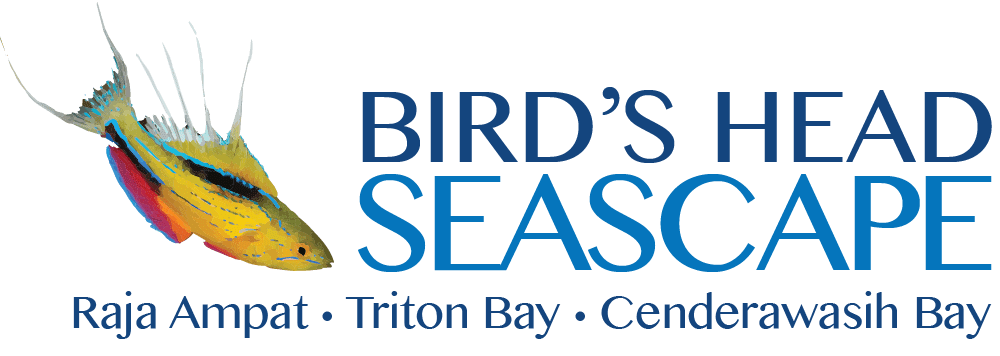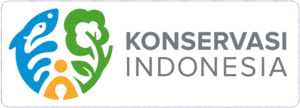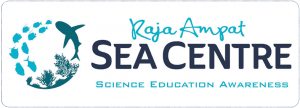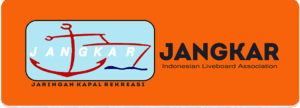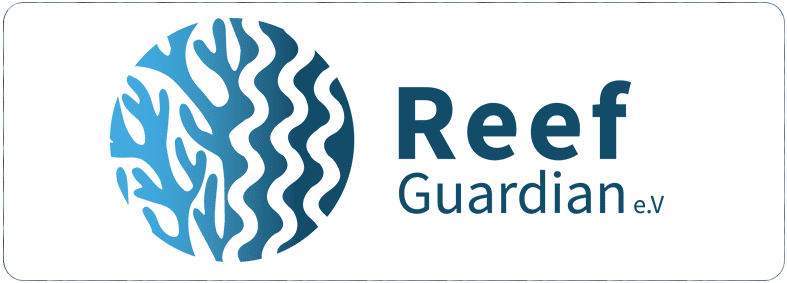Library / Research / Conservation
Explore PDFs and information about current and past research topics. Study all of the research data from the region.
<< RETURN TO LIBRARY INDEX
| Name | Size | Hits |
|---|---|---|
 The ReSharker (Issue 6) The ReSharker (Issue 6) |
1756843637 Author(s): Nathaniel Soon Tags: Raja Ampat, conservation, Bird's Head Seascape, Indonesia, diving, MPA, endangered species, Marine Protected Area, Coral Triangle, leopard shark, Misool, Shark, Environment, scuba, & Protected Areas, Science, ecology, education, initiatives Description: The ReSharker is the international communication newsletter of ReShark, an international collective effort to recover threatened sharks and rays around the world. “The ReSharker” is a quarterly newsletter designed to update ReShark/StAR Project partners on the project’s most recent activities. Latest stories: Message from Our Executive Director, Dr. Mark Erdmann GASSE Achieves World-First in Shark Conservation Momentum Builds for the StAR Project in Thailand New Releases, Expanded Outreach and Notable Resightings in Raja Ampat 19.0 MiB |
117 |
 ReShark-5 Years of Impact Report ReShark-5 Years of Impact Report |
1749686349 Author(s): ReShark Council-MV Erdmann, Hap Fatzinger, Lisa Hooper, Rita Jabado, Erin Meyer, Abraham Sianipar Tags: Raja Ampat, West Papua, Indonesia, ReShark, rewilding, StAR Project, Indo-pacific leopard shark Description: Comprehensive report on Five Years of Impact for ReShark. Restoration of depleted populations of sharks and rays through a network of global partners and advocates using science-based rewilding efforts. First initiative, Stegostoma tigrinum Augmentation and Recovery (StAR) Project in 2020 focusing of Raja Ampat< West Papua, Indonesia with Indo-Pacific leopard sharks. 7.8 MiB |
68 |
 Insights into the visitations of oceanic manta rays at cleaning stations on coral reefs in the Bird's Head Seascape, Eastern Indonesia Insights into the visitations of oceanic manta rays at cleaning stations on coral reefs in the Bird's Head Seascape, Eastern Indonesia |
1747090161 Author(s): Edy Setyawan, Ronald Mambrasar, Abraham B. Sianipar, Abdy W. Hasan, Mochamad I. H. Putra, Imanuel Mofu, Calvin S. Beale, Mark V. Erdmann Tags: endangered species, Marine megafauna, passive acoustic telemetry, Mobula birostris, site fidelity, marine protected areas (MPAs), Mobula, spatial connectivity, network analysis, Manta Rays, Oceanic Manta Rays Description: The globally endangered oceanic manta ray Mobula birostris is believed to spend significantly more time in the open ocean than in coastal areas. Nonetheless, the Bird's Head Seascape (BHS) in eastern Indonesia hosts a large population of this species (over 850 individuals), frequently sighted at coral reef cleaning stations and forming a vital asset for marine tourism in the region. Despite this, detailed understanding of the movements and habitat use of this wide-ranging species within shallow (<30 m) coral reef ecosystems remains limited. Addressing this knowledge gap is urgently required for the sustainable management of oceanic manta ray-focused tourism in the region. Here, we report the results of an initial passive acoustic telemetry study investigating the use of coral reef cleaning stations by oceanic manta rays. 3.0 MiB |
226 |
 Conservation in Raja Ampat: Mark Erdmann & A Holistic Approach Conservation in Raja Ampat: Mark Erdmann & A Holistic Approach |
1743100121 Author(s): Don Silcock Tags: conservation, ReShark, rewilding, tourism, Marine protected areas, underwater photography Description: This article was originally published in X-Ray magazine. It focuses on the history and work of Dr. Mark Erdmann, in association with local government, Conservation International and ReShark, in establishing a conservation strategy and the creation of Marine Protected Areas in Raja Ampat, part of the Bird's Head Seascape located in West Papua, Indonesia. Author Don Silcock is an Australian underwater photographer and journalist base in Bali, Indonesia. 3.6 MiB |
354 |
 Rewilding Coral Reefs Rewilding Coral Reefs |
1740513193 Author(s): Mark Erdmann Tags: conservation, ReShark, rewilding, StAR, leopard shark, Shark, zebra shark, Conservation International, DAN, Conservation Biology, Alert Diver Description: REWILDING IS A POPULAR TERM IN CONSERVATION CIRCLES, but what does it mean, and is it appropriate for coral reefs? Should divers be clamoring for reef rewilding? Does it represent a significant advancement in coral reef conservation? Though I believe rewilding coral reefs is a valuable approach, it requires a strong, established foundation of good old-fashioned marine conservation. I view reef rewilding as a tertiary marine conservation strategy that we should attempt only after the fundamentals of an effective marine conservation strategy (often anchored with a well-managed marine protected area) are in place. The ReShark initiative in Raja Ampat, Indonesia, is a good case study for reef rewilding. ReShark’s StAR project is the world’s first program designed to recover an endangered shark population by releasing into the wild leopard shark pups hatched from eggs purpose-bred in large public aquariums around the world. 1.5 MiB |
151 |
| 1739917934 Author(s): Edy Setyawan, Abraham B. Sianipar, Ronald Mambrasar, Muhamad Izuan, Abdy W. Hasan, Fahmi, Mujiyanto, Orgenes Ambafen, Imanuel Mofu, Mochamad Iqbal Herwata Putra and Mark V. Erdmann Tags: Raja Ampat, West Papua, Manta Ray, endangered species, marine protected area; Lesser Sunda; Kalimantan; resource selection; Papua; marine megafauna; habitat use, Mobula alfredi Description: Indonesia is home to significant populations of globally vulnerable reef manta rays (Mobula alfredi) in at least four key regions: Berau, Nusa Penida, Komodo, and Raja Ampat. Despite detailed population studies in each of these regions, little is known about their horizontal movement patterns. Our study used satellite telemetry to investigate reef manta rays’ habitat use and home ranges. A total of 33 manta rays were tagged with SPLASH10F-321A satellite tags across the four regions: Berau (n = 5), Nusa Penida (n = 8), Komodo (n = 6), and Raja Ampat (n = 14), yielding usable data from 25 tags. The rays were tracked for 7 to 118 days (mean ± SD = 50 ± 30) from July 2014 to July 2022. The results showed localized movements, strong residency near tagging sites, and high site fidelity as evidenced by area-restricted search (ARS) behaviors and frequent revisitations. Most manta rays showed restricted home ranges in each region, with no connectivity between regions. Across 25 individuals, the home range (95% utilization distributions) varied significantly, ranging from 19 to 48,294 km2 (mean ± SD = 4667 ± 10,354). These findings offer important insights into the spatial movement patterns of reef manta rays in Indonesia, allowing the formulation of more effective management strategies. Comprehensive knowledge of the movement ecology and habitat use of threatened species is essential for developing effective conservation and management strategies aimed at their protection [1]. The reef manta ray Mobula alfredi, currently listed as vulnerable (VU) on the IUCN Red List of Threatened Species, is distributed throughout the Indo- Pacific region [2]. Globally, populations of reef manta rays have experienced significant declines over the past five decades, primarily due to fishing pressures, including bycatch and targeted fisheries [2,3]. In 2014, the reef manta ray, along with the oceanic manta ray (M. birostris), was granted full protection across Indonesia by the national government, following a landmark initiative by the Raja Ampat regency government which established Raja Ampat as Southeast Asia’s first shark and ray sanctuary in 2012 [4,5]. Despite this legal protection, knowledge of the population dynamics and movement ecology of manta rays in Indonesia remains limited. 9.4 MiB |
206 | |
 Insights into cetacean sightings, abundance, and feeding associations: observations from the boat lift net fishery in the Kaimana important mammal area, Indonesia Insights into cetacean sightings, abundance, and feeding associations: observations from the boat lift net fishery in the Kaimana important mammal area, Indonesia |
1736890463 Author(s): Mochamad Iqbal Herwata Putra, Yance Malaiholo, Achmad Sahri, Edy Setyawan, Sekar Herandarudewi, Abdy Hasan, Hanggar Prasetio, Nur Ismu Hidayat, Mark Erdmann Tags: IMMA (important marine mammal area), lift net fishery, predator-prey interaction, cetacean sighting and abundance, temporal trend Description: A comprehensive understanding of cetacean ecology is crucial for conservation and management. In 2018, Kaimana was identified as an IMMA( Important Marine Mammal Area) due to the presence of Australian humpback dolphins (Sousa sahulensis), Pacific bottlenose dolphins (Tursiops aduncus), and Bryde's whales (Balaenoptera edeni). Cetaceans (whales, dolphins, and porpoises) play a vital role in the complex structure and function of coastal ecosystems and are generally considered as a crucial indicator of ocean health. Kaimana is situated in the southwest part of West Papua, Indonesia, and is an important part of the Bird's Head seascape MPA Network. It is located at the heart of the Coral Triangle. Five species were positively identified in the Kaimana IMMA during the study, including Bryde's whale, Killer Whale (Orcinus orca), Australian humpback dolphin, Spinner dolphin (Stella longirostris), and Indo-Pacific bottlenose dolphin. Killer whales represents a new record, having never before been reported from the area. 2.6 MiB |
618 |
 Climate-driven Global Redistribution of an Ocean Giant Predicts Increased Threat from Shipping Climate-driven Global Redistribution of an Ocean Giant Predicts Increased Threat from Shipping |
1733174219 Author(s): Womersley, F.C., Sousa, L.L., Humphries, N.E. et al. Tags: whale sharks, Conservation Biology, Climate Change Oceanography, Climate Change Impacts Description: Climate change is shifting animal distributions. However, the extent to which future global habitats of threatened marine megafauna will overlap existing human threats remains unresolved. Here we use global climate models and habitat suitability estimated from long-term satellite-tracking data of the world’s largest fish, the whale shark, to show that redistributions of present-day habitats are projected to increase the species’ co-occurrence with global shipping 25.5 MiB |
183 |
 Southeast Misool-ISRA Fact Sheet Southeast Misool-ISRA Fact Sheet |
1723749595 Author(s): ISRA-various authors Tags: Description: IUNC's ISRA regional fact sheet for Southeast Misool. Within this area there are: threatened species (e.g., Blacktop Reef Shark Carcharhinus melanopterus); range-restricted species (e.g., Raja Ampat Epaulette Shark Hemiscyllium freycineti); reproductive areas (e.g., Reef Manta Raja Mobile alfredi); feeding areas (Longhorned Pygmy Devil Rays Mobile eregooddoo); undefined aggregations (e.g., Oceant Manta Ray Mobile birostris); are the area sustains a high diversity of sharks (32 species). 6.9 MiB |
201 |
 Seram-Sea-ISRA Fact Sheet Seram-Sea-ISRA Fact Sheet |
1723749484 Author(s): ISRA-various authors Tags: Description: IUNC's ISRA regional fact sheet for Seram Sea. Within this area there are: threatened species and movement areas (Oceanic Manta Ray Mobula birostris). 1.8 MiB |
468 |
 Sarmi-Jayapura-ISRA Fact Sheet Sarmi-Jayapura-ISRA Fact Sheet |
1723749395 Author(s): ISRA-various authors Tags: Description: IUNC's ISRA regional fact sheet for Sarmi-Jayapura. n this area there are: threatened species and range-restricted species (Hooded Carpetshark Hemiscyllium strahani). 1.4 MiB |
265 |
 Papua-Micronesia-Corridor-ISRA Fact Sheet Papua-Micronesia-Corridor-ISRA Fact Sheet |
1723749245 Author(s): ISRA-various authors Tags: Description: IUNC's ISRA regional fact sheet for Papua-Micronesia Corridor. Within the area there are: threatened species and areas important for movement (Whale Shark Rhincodon typus). 2.5 MiB |
273 |
 Northwest Waigeo-ISRA Fact Sheet Northwest Waigeo-ISRA Fact Sheet |
1723748706 Author(s): ISRA-various authors Tags: Description: IUNC's ISRA regional fact sheet for Northwest Waigeo. Within this area there are: threatened species (e.g., Giant Guitarfish Glaucostegus typus); range-restricted species (e.g., Raja Ampat Epaulette Shark Hemiscyllium freycineti); reproductive areas (e.g., Blacktop Reef Shark Carcharhinus melanopterus); feeding areas (Reef Manta Ray Mobile alfredi); undefined aggregations (e.g., Oceanic Manta Ray Mobile birostris); and the area sustains a high diversity of sharks (33 species). 4.4 MiB |
182 |
 Northern-Raja-Ampat-Corridor-ISRA Fact Sheet Northern-Raja-Ampat-Corridor-ISRA Fact Sheet |
1723748567 Author(s): ISRA-various authors Tags: Description: IUNC's ISRA regional fact sheet for Northern Raja Ampat Corridor. Within the area there are: threatened species and movement areas (Reef Manta Ray Mobula alfredi). 2.1 MiB |
193 |
 Mommon-Seamount-ISRA Fact Sheet Mommon-Seamount-ISRA Fact Sheet |
1723748454 Author(s): ISRA-various authors Tags: Description: IUNC's ISRA regional fact sheet fro Mommon-Seamount. Within the area there are: threatened species and undefined aggregations (Oceanic Manta Ray Mobula birostris). 1.4 MiB |
207 |
 Merauke-ISRA Fact Sheet Merauke-ISRA Fact Sheet |
1723748338 Author(s): ISRA-various authors Tags: Description: IUNC's ISRA regional fact sheet for Merauke. Within this area there are: threatened species (e.g., Largetooth Sawfish Pristis pristis), and reproductive areas (e.g., Narrow Sawfish Anoxypristis cuspidata). 1.3 MiB |
403 |
 Kaimana-ISRA Fact Sheet Kaimana-ISRA Fact Sheet |
1723748243 Author(s): ISRA-various authors Tags: Description: IUNC's ISRA regional fact sheet for Kaimana. Within this area there are: threatened species (e.g., Henry’s Epaulette Shark Hemiscyllium henryi); range-restricted species (e.g., Indonesian Wobbegong Orectolobus leptolineatus); and feeding areas (Whale Shark Rhincodon typus). 1.6 MiB |
299 |
 Fakfak-ISRA Fact Sheet Fakfak-ISRA Fact Sheet |
1723748122 Author(s): ISRA- various authors Tags: Description: IUNC's ISRA regional fact sheet for Fakfak. Within the area there are: threatened species and range-restricted species (Henry's Epaulette Shark Hemiscyllium henryi). 1.6 MiB |
233 |
 Dampier-Strait-ISRA Fact Sheet Dampier-Strait-ISRA Fact Sheet |
1723747939 Author(s): ISRA-various authors Tags: Description: IUNC's ISRA regional fact sheet for Dampier Strait. Within this area there are: threatened species (e.g., Snaggletooth Shark Hemipristis elongata); range-restricted species (e.g., Spotted-belly Catshark Atelomycterus erdmanni); reproductive areas (e.g., Blacktip Reef Shark Carcharhinus melanopterus); feeding areas (e.g., Reef Manta Ray Mobula alfredi); undefined aggregations (e.g., Oceanic Manta Ray Mobula birostris); and the area sustains a high diversity of sharks (32 species). 1.9 MiB |
269 |
 Cenderawasih-Bay-ISRA Fact Sheet Cenderawasih-Bay-ISRA Fact Sheet |
1723747221 Author(s): ISRA-various authors Tags: Description: IUNC's ISRA fact sheet for Cenderawasih Bay. Within the area there are: threatened species (e.g., Gale’s Epaulette Shark Hemiscyllium galei); range-restricted species (Gale’s Epaulette Shark); and feeding areas (Whale Shark Rhincodon typus). 1.8 MiB |
652 |
 Empowering Conservation Through Local Engagement Empowering Conservation Through Local Engagement |
1718047073 Author(s): Stephen Frink (Diver Alert Network Tags: Raja Ampat, conservation, Bird's Head Seascape, Indonesia, MPA, Misool, Marine protected areas, Misool Resort, DAN, Divers Alert Network, Misool Foundation, West aqua, Stephen Frink, Marit Miners Description: The spectacular ecosystem of Indonesia’s Raja Ampat offers ample opportunities for fish portraits and macro shots with a 100mm lens, but the broad expanses of pristine hard corals punctuated with colorful soft corals and sea fans made it difficult for me to forego using my wide-angle lens during a recent liveaboard trip. Seeing reefs this healthy — especially after the bleaching in the Florida Keys and the Caribbean last summer — kept me shooting with my 15-35mm lens, but I frequently found vibrant reef dwellers, such as coral groupers or clown triggerfish, that I also wanted to photograph. Even at 35mm, I couldn’t get close enough for the fish portrait I imagined before they would dart away. On one morning dive, however, the fish were much easier to approach. Wondering if this change in behavior was due to the time of day or the tides, I asked our cruise director what was different from the previous day. He said we had just entered the Misool Marine Reserve, where the fish were friendly. Suddenly, it all made sense. 2.0 MiB |
223 |
 How Big Is That Manta Ray? A Novel and Non-Invasive Method for Measuring Reef Manta Rays Using Small Drones How Big Is That Manta Ray? A Novel and Non-Invasive Method for Measuring Reef Manta Rays Using Small Drones |
1711988238 Author(s): Edy Setyawan, Ben C. Stevenson, Muhamad Izuan, Rochelle Constantine, and Mark V. Erdmann Tags: Manta Ray, Mant, mantas Drone Drone photography, measurements, morphometric measurements Description: This study explores the application of small, commercially available drones to determine morphometric the measurements and record key demographic parameters of reef manta rays (Mobula alfredi) in Raja Ampat, Indonesia. DJI Mavic 2 Pro drones were used to obtain videos of surface-feeding M. alfredi with a floating, known-length PVC pipe as a reference scale—thus avoiding the need to utilize altitude readings, which are known to be unreliable in small drones, in our photogrammetry approach. Three dimensions (disc length (DL), disc width (DW), and cranial width (CW)) from 86 different individuals were measured. A hierarchical multivariate model was used to estimate the true measurements of these three dimensions and their population-level multivariate distributions. The estimated true measurements of these dimensions were highly accurate and precise, with the measurement of CW more accurate than that of DL and, especially, of DW. 1.7 MiB |
518 |
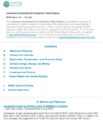 Indonesia Sustainable Development, Issue 14, July 13, 2023 Indonesia Sustainable Development, Issue 14, July 13, 2023 |
1689625355 Author(s): Starling Resources-various authors Tags: Description: The Indonesia Sustainable Development News Digest is a biweekly collection of summaries of articles related to conservation, the environment, and sustainability in Indonesia that have appeared in print or online in local, regional, and global English-language media. We welcome comments, suggestions, and corrections. To learn more about us and to access previous editions of the News Digest, please visit our website at www.starlingresources.com. If you would like to add colleagues or friends to our distribution list or unsubscribe, please contact us at newsdigest@starlingresources.com. This is issue 14 for 2023. 0.2 MiB |
347 |
 "A Wild Plan" "A Wild Plan" |
1688668733 Author(s): Craig Welch-Senior Writer National Geographic Society Tags: Raja Ampat, West Papua, Indonesia, ReShark, rewilding, endangered species, StAR, Shark, National Geographic Description: "Aquariums around the world are raising endangered sharks and releasing them into the sea. It's an unprecedented mission and it just might work." 1.9 MiB |
488 |
 Riset buktikan populasi pari manta karang terus tumbuh di Raja Ampat, buah dari kebijakan dan upaya Riset buktikan populasi pari manta karang terus tumbuh di Raja Ampat, buah dari kebijakan dan upaya |
1669670019 Author(s): Bird's Head Seascape Tags: Raja Ampat, Megafauna, Perikanan berkelanjutan, konservasi perairan, tata kelola perikanan, kawasan konservasi perairan, Pari Manta Description: Kepulauan Raja Ampat, Papua Barat, adalah habitat bagi kebanyakan pari manta karang di Indonesia, Mobula alfredi. Satwa laut ini bukanlah mamalia, melainkan ikan bertulang rawan yang masih berkerabat dengan hiu. Populasi pari manta karang rentan terganggu. Pasalnya, mereka bertumbuh dewasa sangat lambat dan memiliki tingkat kesuburan yang sangat rendah. Pejantannya baru menjadi dewasa secara seksual pada umur 9-13 tahun, sedangkan betina butuh waktu lebih lama lagi – sekitar 13-17 tahun. Pari manta karang betina juga hanya melahirkan satu individu saban 2-6 tahun, dengan masa kehamilan mencapai setahun. Di kawasan Indo-Pasifik seperti Nusa Tenggara Timur, Sulawesi Utara, Filipina, dan Papua Nugini, populasi pari manta karang menyusut karena penangkapan berlebihan. Tren yang sama juga terjadi di Mozambik di Afrika Timur. 4.7 MiB |
550 |
 Reef manta rays are in decline globally – but new research finds one place in Indonesia where these Reef manta rays are in decline globally – but new research finds one place in Indonesia where these |
1669669814 Author(s): Edy Setyawan Tags: Raja Ampat, conservation, Manta Ray, MPA Network, marine conservation, Marine protected areas, Reef Manta Ray, Mobula Alfred, Citizen Science, coral reefs, Oceans Description: Raja Ampat archipelago in West Papua is home to Indonesia’s largest population of reef manta rays, Mobula alfredi. They are not mammals, but cartilaginous fish that are related to sharks. This species is characterised by late maturation and extremely low fertility, which make their populations especially vulnerable. Males start to sexually mature at 9to 13 years old, while females require 13 to 17 years to mature. A female gives birth to only one pup every 2 to 6 years after about one year of pregnancy. Their populations have been depleted due to overfishing in many regions in Indo-Pacific. 4.7 MiB |
336 |
 Misool - ReShark Final Report 2022 Misool - ReShark Final Report 2022 |
1659463763 Author(s): Misool Foundation Tags: Description: Progress and description of Re-Wilding facility, including the Hatchery, Grow Out Tanks and Sea Pen 3.1 MiB |
363 |
 Residency and Use of an Important Nursery Habitat, Raja Ampat's Wayag Lagoon, by Juvenile Reef Manta Rays (Mobula Alfredi) Residency and Use of an Important Nursery Habitat, Raja Ampat's Wayag Lagoon, by Juvenile Reef Manta Rays (Mobula Alfredi) |
1655231134 Author(s): Edy Setyawan with Mark Erdmann, Ronald Mambrasar, Abdi Hasan, Abraham Sianipar, Rochelle Constantine, Ben Stevenson, And Fabrice Jane Tags: Marine megafauna, passive acoustic telemetry, coral reefs, satellite telemetry, spatial ecology, movements, home range, photo-identification Description: The behaviour and spatial use patterns of juvenile manta rays within their critical nursery habitats remain largely undocumented. Here, we report on the horizontal movements and residency of juvenile reef manta rays (Mobula alfredi) at a recently discovered nursery site in the Wayag lagoon, Raja Ampat, Indonesia. Using a multi-disciplinary approach, we provide further corroborative evidence that the lagoon serves as an important M. alfredi nursery. Although nursery areas have been identified for a variety of elasmobranch species (Heupel et al., 2019), few studies have specifically examined the benefits of nursery areas for newborn and juvenile elasmobranchs, such as improved fitness and increased survival. Many elasmobranch species, including manta rays and other mobulid rays (Mobula spp.), use shallow and sheltered habitats like lagoons as nursery areas for newborns (Heupel et al., 2007; Stewart et al., 2018b). Reef lagoons provide several benefits for juvenile elasmobranchs, such as calm sea conditions, protection from large predators, reliable food availability, and opportunities for social interaction with conspecifics (Guttridge et al., 2011; Jacoby et al., 2012; McCauley et al., 2014; Rojas et al., 2014; Heupel et al., 2019). Occupying sheltered nursery areas may also contribute to higher chances of newborn survival by enabling individuals to grow in a safe environment and become better equipped to later escape predators and find diffuse prey (Branstetter, 1990). 10.8 MiB |
388 |
 How Big Is That Manta Ray? A Novel and Non-Invasive Method for Measuring Reef Manta Rays Using Small Drones How Big Is That Manta Ray? A Novel and Non-Invasive Method for Measuring Reef Manta Rays Using Small Drones |
1647044233 Author(s): Edy Setyawan, Ben C. Stevenson, Muhamad Izuan, Rochelle Constantine, and Mark V. Erdmann Tags: conservation, MPA, Manta Ray, tourism, Marine Protected Area, aerial photogrammetry; marine megafauna; unmanned aerial vehicle; sexual dimorphism; size at maturity Description: This study explores the application of small, commercially available drones to determine morphometric the measurements and record key demographic parameters of reef manta rays (Mobula alfredi) in Raja Ampat, Indonesia. DJI Mavic 2 Pro drones were used to obtain videos of surfacefeeding M. alfredi with a floating, known-length PVC pipe as a reference scale—thus avoiding the need to utilize altitude readings, which are known to be unreliable in small drones, in our photogrammetry approach. Three dimensions (disc length (DL), disc width (DW), and cranial width (CW)) from 86 different individuals were measured. A hierarchical multivariate model was used to estimate the true measurements of these three dimensions and their population-level multivariate distributions. The estimated true measurements of these dimensions were highly accurate and precise, with the measurement of CW more accurate than that of DL and, especially, of DW. Each pairing of these dimensions exhibited strong linear relationships, with estimated correlation coefficients ranging from 0.98–0.99. Given these, our model allows us to accurately calculate DW (as the standard measure of body size for mobulid rays) using the more accurate CW and DL measurements. We estimate that the smallest mature M. alfredi of each sex we measured were 274.8 cm (males, n = 30) and 323.5 cm DW (females, n = 8). We conclude that small drones are useful for providing an accurate “snapshot” of the size distribution of surface-feeding M. alfredi aggregations and for determining the sex and maturity of larger individuals, all with minimal impact on this vulnerable species. 3.8 MiB |
1857 |
 A holistic approach to manta ray conservation in the Papuan Bird’s Head Seascape: Resounding success, ongoing challenges A holistic approach to manta ray conservation in the Papuan Bird’s Head Seascape: Resounding success, ongoing challenges |
1646955799 Author(s): Edy Setyawan, and others Tags: conservation, Manta Ray, Manta, mantas Description: Despite a precipitous decline in global populations of sharks and rays over the past fifty years due to overfishing, and increasing concerns over the conservation status of manta and devil rays worldwide, manta ray populations in Raja Ampat in the Papuan Bird’s Head Seascape of Indonesia are seemingly thriving. 1.2 MiB |
2006 |
 Islands of Sea: The evolution, ecology and conservation of marine lake invertebrates Islands of Sea: The evolution, ecology and conservation of marine lake invertebrates |
1632165844 Author(s): Diede Louise Maas Tags: marine lakes Description: A major question of ecologists and evolutionary biologists is how biodiversity arises and how it is maintained. Biodiversity is multifaceted, and genetic diversity within populations is one of its components besides species and ecosystem diversity (Vellend and Geber, 2005). Thesis on evolution, ecology, and conservation of marine lake invertebrates. Studies of microevolution focus on intra-specific variation within populations which eventually might lead to the macroevolutionary process of speciation (Hendry et al., 2009). Genetic diversity within populations is usually measured via allele frequencies, or the number of times a variant of a gene occurs in a population. Allele frequencies can change due to mutation, selection, gene flow (migration between populations) and genetic drift (stochastic loss or gain of alleles). The fields of population genetics and genomics aim to improve our understanding of population differentiation (Charlesworth, 2010; Luikart et al., 2018), by questioning how spatial and environmental factors influence microevolutionary processes. Microevolutionary studies in marine systems are lagging behind terrestrial counterparts for several reasons (Selkoe et al., 2008, 2016), first and foremost being the difficulty to access many marine areas. Furthermore, there is a long-standing assumption that marine populations show low rates of genetic differentiation due to the lack of clear physical barriers, assumed high dispersal potential, and associated large effective population sizes (Palumbi, 1994; Ward, 1994; Bowen et al., 2013). While this assumption has both been confirmed and rejected for different organisms (Bierne et al., 2016), in any case the open nature of the marine realm makes defining marine populations a priori challenging. Still, recent studies are showing more population structure in marine ecosystems and at finer spatial scales (1-100kms) than expected by predicted larval dispersal distances (Hauser and Carvalho, 2008; Marshall et al., 2010; Van Wyngaarden et al., 2016; Bernatchez et al., 2018). Further elucidating marine population genetic patterns on small scales and shedding light on what drives marine population connectivity and adaptation is particularly pressing in a changing world. This thesis aims to disentangle relative importance of neutral (geographic and dispersal barriers) and selective (local adaptation) processes on marine population genomic variation using the unique opportunity presented by marine lakes which offer replicated, independent natural laboratories of evolution and ecology. 116 MiB |
425 |
 Fifteen Years Of Lessons From The Seascape Approach: A Framework For Improving Ocean Management At Scale Fifteen Years Of Lessons From The Seascape Approach: A Framework For Improving Ocean Management At Scale |
1623274618 Author(s): Shannon E. Murphy, Ginny Farmer, Laure Katz, Mark V. Erdmann and more Tags: Description: Seascapes are large, multiple-use marine areas, defined scientifically and strategically, in which government authorities, private organizations, and other stakeholders cooperate to conserve the diversity and abundance of marine life and promote human well-being. This approach has been applied by global nonprofit partnerships in five seascapes across eight countries and has drawn on the practical experience of more than 250 partners over 15 years. These experiences have helped define the Seascape approach, consisting of nine essential elements, for achieving effective ocean governance and management from local to regional levels. Lessons learned relate to using integrated planning frameworks, community-led and locally owned initiatives, and a network of partners and a “backbone” organization for effective Seascape planning and design; promoting diversification in funding sources, private sector engagement, and the transition of nonprofit roles to ensure durability of a Seascape; and ensuring Seascape outcomes are measured through robust monitoring and evaluation frameworks and communicated effectively. Seascapes are unique in their ability to create a pathway toward sustainable development. To ensure support and amplification of the approach, they must align with diversified funding opportunities and global priorities outlined in international United Nations conventions focused on sustainable development and ocean health. 4.7 MiB |
88175 |
 Rapid coral reef assessment using 3D modelling and acoustics: acoustic indices correlate to fish abundance, diversity and environmental indicators in West Papua, Indonesia Rapid coral reef assessment using 3D modelling and acoustics: acoustic indices correlate to fish abundance, diversity and environmental indicators in West Papua, Indonesia |
1613682880 Author(s): Mica peck, Ricardo F. Tapilatu, Eveline Kurniati, Christopher Rosado Tags: Description: Providing coral reef systems with the greatest chance of survival requires effective assessment and monitoring to guide management at a range of scales from community to government. The development of rapid monitoring approaches amenable to collection at community level, yet recognised by policymakers, remains a challenge. Technologies can increase the scope of data collection. Two promising visual and audio approaches are (i) 3D habitat models, generated through photogrammetry from video footage, providing assessment of coral cover structural metrics and (ii) audio, from which acoustic indices shown to correlate to vertebrate and invertebrate diversity, can be extracted. 8.2 MiB |
509 |
 Sasi and Marine Conservation in Raja Ampat, Indonesia Sasi and Marine Conservation in Raja Ampat, Indonesia |
1606171034 Author(s): Elizabeth Mcleod, Rodney Salm, Brian W. Szuster Tags: Raja Ampat, marine conservation, Sasi, customary marine tenure Description: Raja Ampat, Indonesia, possesses the greatest diversity of corals and reef fishes on the planet. The area is a priority for marine conservation for the provincial government, local communities, and major international nongovernmental organizations such as The Nature Conservancy and Conservation International. Traditional marine resource management practices in the region, referred to as sasi, have the potential to support conservation objectives. This article contends that while traditional marine resource management systems may support conservation, they must be reinforced by a supportive social structure and governance system to remain relevant in a rapidly changing world. Two villages in Raja Ampat were studied to gain a better understanding of sasi and how this practice has been affected by cultural, political, and economic change. These villages illustrate how the role of religious authorities, access to alternative livelihoods, proximity to urban centers, and capacity for monitoring and enforcement may influence the effectiveness of marine resource management systems. Our research suggests that the continued relevance of sasi in marine resource management relies on the support of influential local leaders and businesses and government regulations that reinforce traditional resource use practices. 0.5 MiB |
2722 |
 Cleanliness, Health, Safety & Environmental Sustainability Guidance for Indonesia's Dive Industry Handbook Cleanliness, Health, Safety & Environmental Sustainability Guidance for Indonesia's Dive Industry Handbook |
1604610945 Author(s): Indonesian Ministry of Tourism Tags: Description: Guidebook on Cleanliness, Health, Safety & Environmental Sustainability Guidance for Indonesia's Dive Industry Handbook. Produced by the Ministry ofTourism and Creative Economy/the Tourism Ministry and the Creative Economy Agency of the Republic of Indonesia together with the Divers Alert Network (DAN) Indonesia. This handbook is intended as a guide for everyone working in dive tourism, and their customers, providing a framework and reference for safely conducting diving activities in Indonesia. For Indonesia’s dive tourism industry to persist in the post-COVID-19 world, we need to earn the trust of the world’s diving community. And to do that, we need to ensure that Indonesia’s diving industry meets international standards of cleanliness, health, safety, and environmental sustainability. 13.8 MiB |
815 |
 Heavy Metals Contaminants In The Eggs And Temperatures Of Nesting Beaches Of Sea Turtles In Kaimana, West Papua, Indonesia Heavy Metals Contaminants In The Eggs And Temperatures Of Nesting Beaches Of Sea Turtles In Kaimana, West Papua, Indonesia |
1600217206 Author(s): RICARDO F. TAPILATU, HENGKI WONA, RIMA HS. SIBURIAN, and SEFRIANTO T. SALEDA Tags: Description: Biodiversitas 21: 4582-4590. Etna Bay and Venu Island in Kaimana, West Papua, Indonesia are two of many areas that sea turtles use during the nesting season. Here, we report data on heavy metals contaminants from a sample of eggs of green (Chelonia mydas) and hawksbill (Eretmochelys imbricata) turtles collected from a subset of two nests during the 2016 nesting season at Venu Island, Kaimana, West Papua, Indonesia. Three heavy metals contaminants (i.e. mercury, cadmium, arsenic) found in eggs exceeded the established safety limits for human consumption. 0.9 MiB |
687 |
 Recognizing Peripheral Ecosystems In Marine Protected Areas: A Case Study Of Golden Jellyfish Lakes in Raja Ampat, Indonesia Recognizing Peripheral Ecosystems In Marine Protected Areas: A Case Study Of Golden Jellyfish Lakes in Raja Ampat, Indonesia |
1600215832 Author(s): Diede L. Maas, Agustin Capriati, Awaludinnoer Ahmad, Mark V. Erdmann, Machiel Lamers, Christiaan A. de Leeuw, Luca Prins, Purwanto, Amanda P. Putri, Ricardo F. Tapilatu, Leontine E. Becking Tags: Description: Peripheral marine ecosystems can harbor endemic diversity and attract tourism attention, yet are generally not included in conservation management plans due to their remoteness or inland positioning. A case study in Raja Ampat of seven landlocked marine lakes containing golden jellyfish (Mastigias spp.) was conducted to address the lack of fundamental insights into evolutionary, ecological and social contexts of these ecosystems. An interdisciplinary approach was taken towards identifying the jellyfish lakes as distinct management units in order to incorporate them into existing Marine Protected Areas. Mastigias papua populations showed strong genetic (ϕST: 0.30–0.86) and morphological (F = 28.62, p-value = 0.001) structure among lakes, with putative new subspecies. Risks arising from rapid increase in tourism to Raja Ampat (30-fold since 2007) warrant restrictions on jellyfish lake use. Recommendations are provided for adaptive management and science-based conservation policies for jellyfish lakes across Indonesia. 1.0 MiB |
599 |
 Center of Excellence for Sustainable Development Newsletter January-March 2020 Center of Excellence for Sustainable Development Newsletter January-March 2020 |
1591918150 Author(s): Fitryanti Pakiding Tags: Description: Perekrutan dan Pelatihan bagi Calon Pendamping Masyarakat Periode Februari - Juli 2020 di Distrik Abun, Kabupaten Tambrauw - Papua Barat Lokakarya Penilaian Efektivitas Pengelolaan Kawasan Konservasi Perairan, Pesisir dan Pulau-Pulau Kecil (E-KkP3k) di Wilayah Perairan Bentang Laut Kepala Burung, Papua Lokakarya Para Pihak dalam Pengembangan Kabupaten Konservasi dan Masyarakat Adat di Tambrauw, Papua Barat Dive Master untuk Mutu Pengambilan Data Ekologi Program Capacity Building bersama Para Mitra: Pembelajaran Selama Sepuluh Tahun Monitoring Ekologi dan Sosial di BLKB Penyebarluasan Informasi Terkait Isu-isu Konservasi: Pemutaran Film Dokumenter dengan Tema Lingkungan Conservation Goes To School Nabire & Biak Penyebarluasan Informasi Terkait Isu-isu Konservasi: Berbagi Isu Konservasi Melalui Talk show di Nabire dan Biak Monitoring dan Evaluasi Lapang Periode Maret 2020: Program Pemberdayaan Masyarakat di Distrik Abun Audit Eksternal Sebagai Bagian Pertanggungjawaban dalam Program BAF Siklus 2 Tahun 2019 Cerita lapangan dari Pantai Jeen Syuab Pada Musim Peneluran Oktober 2019 - Maret 2020 Penyebaran Informasi terkait Isu-isu Konservasi Kepada Masyarakat Umum melalui Pameran HUT Pekabaran Injil ke-165 di Manokwari Diseminasi Hasil Survei Sosial Ekonomi dan Ekologi di Kabupaten Nabire Diseminasi Hasil Survei Ekologi dan Sosial Ekonomi di Jejaring Kawasan Konservasi Perairan Raja Ampat Kepada Pemerintah Daerah Kabupaten Raja Ampat Work From Home (WFH): Sebuah Adaptasi Kerja di Tengah Pandemi COVID-19 Seberapa Penting Data 5.5 MiB |
873 |
 2016 State Of Seascape Bird's Head Seascape Marine Protected Area Network 2016 State Of Seascape Bird's Head Seascape Marine Protected Area Network |
1576526898 Author(s): Bird's Head Seascape Tags: Description: A comprehensive overview of the State of the Bird's Head Seascape Marine Protected Area Network. Complied in 2016. The Bird’s Head Seascape (BHS) of West Papua, Indonesia, is the global epicenter of marine biodiversity and a priority for conservation. Over the past decade, marine conservation efforts, led by the Indonesia government in partnership with civil society and local communities, have brought more than 3.6 million hectares under protection through the establishment and management of Marine Protected Areas (MPAs) in the Seascape. 8.8 MiB |
2238 |
 Sueviota Minersorum, a new species of sponge-dwelling goby (Teleostei: Gobiidae) from Misool, Raja Ampat Islands, Indonesia Sueviota Minersorum, a new species of sponge-dwelling goby (Teleostei: Gobiidae) from Misool, Raja Ampat Islands, Indonesia |
1572376767 Author(s): David W. Greenfield, Mark V. Erdmann, Ilham Vermandra Utama Tags: taxonomy, coral reef fishes, ichthyology, systematics, Indo-Pacific Ocean, dwarfgoby, Eviota, sponge Description: A new gobiid species, Sueviota minersorum, is described from 4 specimens, 17.9–23.2 mm SL, collected from inside Theonella tube sponges at 20–22 m depth. The new species has a dorsal/anal-fin ray count of 9/8 and 17 or 18 pectoral-fin rays, all unbranched, and 27 or 28 lateral scales. It furthermore has a basal membrane fully joining the two branched fifth pelvic-fin rays, a character shared with 4 congeners: Sueviota bryozophila, S. lachneri, S. larsonae, and S. tubicola. Sueviota minersorum is most similar to S. lachneri, but differs in having a stocky body with a deep caudal peduncle, not tapering from the mid-body, and in color patterns. It differs from S. bryozophila in having all pelvic-fin rays branched (vs. unbranched), having a single AITO pore (vs. paired AITO pores), PITO and NA pores (vs. absent), and in color patterns. It differs from S. larsonae and S. tubicola by the absence of a frenum (vs. present) and in color patterns. 2.6 MiB |
1347 |
 BAF-Monthly Update Aug 2019 (EN) BAF-Monthly Update Aug 2019 (EN) |
1567097026 Author(s): Blue Abadi Fund Tags: Description: Blue Abadi Fund Update-August 2019 0.6 MiB |
559 |
 A time for Locally Driven Development In Papua And West Papua A time for Locally Driven Development In Papua And West Papua |
1560801509 Author(s): Mochamad Indrawan, Agus Sumule, Arief Wijaya, Noak Kapisa, Frans Wanggai, Mubariq Ahmad, Benja V. Mambai & Charlie D. Heatubun Tags: Description: The vast bio-cultural diversity of Tanah Papua (Land of Papua) are important resources for local economic development, especially where their sustainable use incorporates affirmative action to ensure that indigenous communities capture the resulting benefits. Papuan stakeholders already have their own detailed plans, and there are some success stories to instill confidence in the abilities of the indigenous peoples of Papua to lead their own development. Multi-stakeholder approaches are known to work well, and in this case, locally driven initiatives are also known to be promising. This viewpoint suggests the need for a balance between inclusive participation in multi-stakeholder programs and the enhancement of locally driven initiatives. 1.2 MiB |
1906 |
 West Papua Declared Conservation Province West Papua Declared Conservation Province |
1502738880 Author(s): Ketut Sarjana Putra Tags: conservation, West Papua, development Description: West Papua has been declared a conservation province, setting a pathway for sustainable development 0.2 MiB |
1026 |
 Analysis of management effectiveness of Local Marine Conservation Area (KKLD) Mayalibit Bay, Raja Ampat Regency, West Papua Province Analysis of management effectiveness of Local Marine Conservation Area (KKLD) Mayalibit Bay, Raja Ampat Regency, West Papua Province |
1502738336 Author(s): Handayani Handayani, Sutrisno Anggoro, Boedi Hendrarto, Abdul Kohar Tags: MPA, Raja Ampat MPA Network Description: The establishment of Marine Conservation Area (KKL) is not necessarily becoming desired protection and conservation efforts. Therefore, questions raise whether the KKL management has been performed effectively in order to obtain sustainable outcomes as well as to improve community socioeconomic status. This research aimed to analyze the effectiveness of the management of the Local Marine Conservation Area (KKLD) Mayalibit Bay in Raja Ampat Regency, Indonesia. 0.2 MiB |
1505 |
 Generating actionable data for evidence-based conservation: The global center of marine biodiversity as a case study Generating actionable data for evidence-based conservation: The global center of marine biodiversity as a case study |
1502737999 Author(s): Helen E. Fox,Megan D. Barnes,Gabby N. Ahmadia, Grace Kao, Louise Glew, Kelly Haisfield, Nur Ismu Hidayat, Christine L. Huffardf, Laure Katz, Sangeeta Mangubhai, Purwanto Tags: Description: Sufficiently rigorous monitoring and evaluation can assess the effectiveness of management actions to conserve natural resources. However, costs of monitoring can be high in relation to program budgets, so it is critical to design monitoring efforts to ensure a high return on investment. To assess the relative contribution of different monitoring strategies to yield information for management decisions, we examine the evolution of a multi-year monitoring program across several MPAs in West Papua, Indonesia. 0.9 MiB |
1824 |
 Benefits of Sasi for Conservation of Marine Resources in Raja Ampat, Papua Benefits of Sasi for Conservation of Marine Resources in Raja Ampat, Papua |
1502734958 Author(s): Paulus Boli, Fredinan Yulianda, Ario Damar, Dedi Soedharma, Rilus Kinseng Tags: Raja Ampat, conservation, Sasi Description: Residents of Raja Ampat, Papua, have been practicing sasi for generations to manage local marine resources. Recognizing its importance for marine resource conservation, efforts have been made to integrate sasi into current conservation management approach. This study was carried out with 3 objectives: (1) to define and elaborate sasi; (2) to examine the benefits of sasi for conservation of marine resources; and (3) to evaluate the change of sasi in the context of conservation. 0.8 MiB |
1173 |
 Status of sea turtle populations and its conservation at Bird’s Head Seascape, Western Papua, Indonesia Status of sea turtle populations and its conservation at Bird’s Head Seascape, Western Papua, Indonesia |
1499803740 Author(s): Ricardo Tapilatu, Hengki Wona, Petrus Batubara Tags: Description: Bird’s Head Seascape region in the northwest of Papua contains the world’s highest marine biodiversity. The area is a unique site which contains a full range of marine and coastal habitats that are important for the breeding, foraging and migration of several species of sea turtles. This survey aimed to characterize critical habitats that are in use by sea turtles across Yapen, Wondama, Manokwari and Kaimana at Bird’s Head Seascape and to assess existing and potential threats to both habitats and population. 0.4 MiB |
1616 |
 Status of sea turtle populations and conservation in the BHS Status of sea turtle populations and conservation in the BHS |
1483997817 Author(s): Ricardo Tapilatu, Hengki Wona, Petrus Batubara Tags: Description: Bird’s Head Seascape region in the northwest of Papua contains the world’s highest marine biodiversity. The area is a unique site which contains a full range of marine and coastal habitats that are important for the breeding, foraging and migration of several species of sea turtles. This survey aimed to characterize critical habitats that are in use by sea turtles across Yapen, Wondama, Manokwari and Kaimana at Bird’s Head Seascape and to assess existing and potential threats to both habitats and population. 0.4 MiB |
1828 |
 Explicitly incorporating socioeconomic criteria and data into marine protected area zoning Explicitly incorporating socioeconomic criteria and data into marine protected area zoning |
1447106434 Author(s): Sangeeta Mangubhai, Joanne R. Wilson , Lukas Rumetna, Yohanes Maturbongs, Purwanto Tags: Raja Ampat, Indonesia, Coral Triangle, conservation planning, Tenure, Zonation, Marine spatial planning Description: Addressing community needs or aspirations is critical for the success of marine protected areas (MPAs). However MPA design based on the results of systematic conservation planning tools alone does not fully represent important information on socioeconomic factors. This is because of the reliance of conservation planning tools on spatial data which is better suited to ecological rather than socioeconomic factors which are predominantly non-spatial. We present a case study from Raja Ampat in Indonesia, to demonstrate how we developed MPA zoning plans for six multiple use MPAs that encompass more than 1 million ha of the world's most diverse coral reef ecosystems. 0.7 MiB |
0 |
 Nest temperatures of the Piai and Sayang Islands green turtle (Chelonia mydas) rookeries, Raja Ampat Papua, Indonesia: Implications for hatchling sex ratios Nest temperatures of the Piai and Sayang Islands green turtle (Chelonia mydas) rookeries, Raja Ampat Papua, Indonesia: Implications for hatchling sex ratios |
1428425525 Author(s): RICARDO F. TAPILATU and FERDIEL BALLAMU Tags: Raja Ampat, conservation, Biodiversity, Sayang, turtles, Piai, sex determination, Chelonia mydas, hatching success Description: This study is the first comprehensive assessment of sex ratios for green sea turtles in Raja Ampat and represents the initiation of a long- term database that can be used at a local level to develop strategies that could potentially offset the impact of long-term climate change on the western Pacific green sea turtle. 0.3 MiB |
2335 |
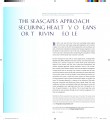 The Seascapes Approach The Seascapes Approach |
1401911154 Author(s): Sebastian Troeng; Peter Bryant; Guilherme Dutra; Mark Erdmann; Ginny Farmer; Scott Henderson; Keith Lawrence; Frazer McGilvray; Jonas Rupp; Romeo Trono Tags: Bird's Head Seascape, Seascapes, large scale marine conservation Description: By 2000 it was clear that some of the most outstanding marine regions in the world were under siege, facing rapid degradation and ecosystem collapse. Just as clear was the fact that old approaches were not going to save them. Conservation International developed the Seascapes Approach to stem the decline in ocean health in some of the most outstanding marine regions of the world, and to demonstrate that transforming the management of large ocean areas to benefit people and ecosystems is possible. 5.1 MiB |
2157 |
 Atlas Sumberdaya Pesisir Kabupaten Raja Ampat Atlas Sumberdaya Pesisir Kabupaten Raja Ampat |
1401910908 Author(s): Konsorsium Atlas Sumberdaya Pesisir Kabupaten Raja Ampat Tags: Raja Ampat, Atlas, Sumberdaya Alam, natural resources Description: Kepulauan Raja Ampat terletak di jantung pusat segitiga karang dunia (Coral Triangle) dan merupakan pusat keanekaragaman hayati laut tropis terkaya di dunia saat ini. Kepulauan ini berada di bagian paling barat pulau induk Papua, Indonesia, membentang di area seluas kurang lebih 4,6 juta hektar. Raja Ampat memiliki kekayaan dan keunikan spesies yang tinggi dengan ditemukannya 1.104 jenis ikan, 699 jenis moluska (hewan lunak) dan 537 jenis hewan karang. 22.6 MiB |
25250 |
 Achieving Fisheries and Conservation Objectives within Marine Protected Areas: Zoning the Raja Ampat Network Achieving Fisheries and Conservation Objectives within Marine Protected Areas: Zoning the Raja Ampat Network |
1401910538 Author(s): Vera Agostini; Hedley Grantham; Joanne Wilson; Sangeeta Mangubhai; Chris Rotinsulu; Nur Hidayat; Andreas Muljadi; Mujahir; Meity Mongdong; Arief Darmawan; Lukas Rumetna; Mark Erdmann; Hugh Possingham Tags: Raja Ampat, MPA Network, conservation planning, zoning, MARXAN Description: Raja Ampat is a national and global priority for conservation as it contains the world’s most diverse coral reefs and critical habitats for globally threatened marine species, and is a cetacean migratory corridor. As a result local governments in this region are facing difficult decisions in their attempt to balance sustainable development with conservation of globally significant marine diversity. This report describes a process conducted to support the development of zoning plans for Raja Ampat’s MPA network. Activities undertaken included developing a spatial database on species, habitats and human uses; engaging stakeholders through a series of meeting and workshop; applying state of the art conservation planning tools to synthesize information and examine trade-offs. 6.2 MiB |
4803 |
 Emerging Threats And Challenges To Bird's Head Seascape Emerging Threats And Challenges To Bird's Head Seascape |
1394664582 Author(s): Sangeeta Mangubhai; Mark Erdmann; Joanne Wilson; Christine Huffard; Ferdiel Ballamu; Tags: conservation, Biodiversity, Bird's Head Seascape, threats Description: The Bird’s Head Seascape located in eastern Indonesia is the global epicenter of tropical shallow water marine biodiversity with over 600 species of corals and 1,638 species of coral reef fishes. The Seascape also includes critical habitats for globally threatened marine species, including sea turtles and cetaceans. Since 2001, the region has undergone rapid development in fisheries, oil and gas extraction, mining and logging. The expansion of these sectors, combined with illegal activities and poorly planned coastal development, is accelerating deterioration of coastal and marine environments. At the same time, regency governments have expanded their marine protected area networks to cover 3,594,702 ha of islands and coastal waters. Low population numbers, relatively healthy natural resources and a strong tenure system in eastern Indonesia provide an opportunity for government and local communities to collaboratively manage their resources sustainably to ensure long-term food security, while meeting their development aspirations. 3.6 MiB |
3 |
 Prioritas Geografi Keanekaragaman Hayati Laut Untuk Pengembangan Kawasan Konservasi Perairan Indonesia Prioritas Geografi Keanekaragaman Hayati Laut Untuk Pengembangan Kawasan Konservasi Perairan Indonesia |
1394664134 Author(s): Christine Huffard; Mark Erdmann; Tiene Gunawan Tags: Indonesia, kawasan konservasi, Prioritas geografi, keanekaragaman hayati, perairan Description: Buku “Prioritas Geografi Keanekaragaman Hayati Laut untuk Pengembangan Kawasan Konservasi Perairan di Indonesia” merupakan kajian untuk prioritas konservasi laut komprehensif yang pertama sejak diterbitkannya “Indonesia Marine Conservation Data Atlas,” oleh IUCN dan WWF untuk Direktorat Jenderal Perlindungan Hutan dan Pelestarian Alam di tahun 1984. Dengan komitmen Indonesia terhadap Coral Triangle Initiative and dalam mencapai target kawasan konservasi perairan seluas 20 juta hektar di tahun 2020, kami ditugaskan untuk melaksanakan strategi prioritisasi wilayah yang berbasis ilmiah yang komprehensif sebagai arahan upaya tersebut. Kegiatan prioritisasi dalam dokumen ini dirancang untuk memenuhi keperluan ini. 4.5 MiB |
6245 |
 Geographic Priorities For Marine Biodiversity Conservation In Indonesia Geographic Priorities For Marine Biodiversity Conservation In Indonesia |
1394663814 Author(s): C.L. Huffard, Mark V. Erdmann, Tiene Gunawan Tags: Bird's Head Seascape, Indonesia, Geographic Priorities, MPA networks, biodiversity conservation Description: “Geographic priorities for marine biodiversity conservation in Indonesia” represents the first comprehensive review of Indonesia’s marine conservation priorities since 1984’s landmark “Indonesia Marine Conservation Data Atlas,” produced for the Indonesian Department of Nature Conservation by IUCN and WWF. With Indonesia’s international commitment to both the Coral Triangle Initiative and achieving a goal of 20 million hectares of marine protected areas by 2020, we were tasked to provide a scientifically comprehensive geographic prioritization strategy to guide these efforts. The prioritization exercise reported in this document was designed to fulfill this request. 4.5 MiB |
2798 |
 Ecosystem-Based Management In The Birds Head Seascape Ecosystem-Based Management In The Birds Head Seascape |
1394663445 Author(s): Christine Huffard; Joanne Wilson; Creusa Hitipeuw; Chris Rotinsulu; Sangeeta Mangubhai Tags: Bird's Head Seascape, MPA, Fisheries, Ecosystem Based Management, oceanography Description: Although West Papua is rich in natural resources, over 40% of people living there fall below the poverty line. Many local residents rely on coastal resources, particularly fisheries for income and food security. Although ecosystems here are relatively healthy compared to many other areas of Southeast Asia, they are no longer pristine and the fishery stocks of some areas are severely depleted. Furthermore, unsustainable exploitation of natural resources, poor development practices, and rapid human population growth threaten these ecosystems and the local communities who depend on them... Ecosystem-based management (EBM) aims to maintain healthy, productive, and resilient environments that provide humans with the ecosystem services they need today and in the future. 12.6 MiB |
2377 |
 Evidence Of Fisheries Depletions And Shifting Baselines In Eastern Indonesia Evidence Of Fisheries Depletions And Shifting Baselines In Eastern Indonesia |
1393962843 Author(s): Cameron Ainsworth; Tony Pitcher; Christovel Rotinsulu Tags: Raja Ampat, Fisheries, shifting baseline Description: We analyzed fisher interview data collected in the Raja Ampat archipelago of Eastern Indonesia to demonstrate a perceived decline in the abundance of living marine resources targeted by commercial and artisanal fisheries. The decline appeared ubiquitous among all tested species and a clear trend emerged in which older fishers recall greater past abundance than younger fishers. This provides evidence for the shifting baseline syndrome, a dangerous cognitive condition in which each generation of fishery stakeholders accepts a lower standard of resource abundance as normal.We used a fuzzy expert system to standardize and quantify the anecdotal evidence, and combine it with additional depletion indicators to produce a decadal time series of resource abundance from 1970 to present. Using governmental catch-per-unit-effort data from more recent years we hindcasted to establish an absolute scale with which to interpret the perceived decline. The interview information suggested that some exploited species may have declined by as much as an order of magnitude since 1970. 0.3 MiB |
4 |
 Codes of Conduct for Divers and Dive Operators in the Bird's Head Seascape Codes of Conduct for Divers and Dive Operators in the Bird's Head Seascape |
1393742778 Author(s): Bird's Head Seascape Tags: Description: Codes of Conduct for Divers and Dive Operators in the Bird's Head Seascape 0.3 MiB |
1605 |





